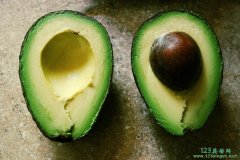高考英语阅读理解100篇 前20篇(3)
编辑:高中作文网 阅读 次
1. What is the main idea of this passage?
A. Children should obey their parents quickly.
B. Children should share with others.
C. The author remembers many of her grandma’s wonderful stories.
D. The grandma’s stories helped teach the children morals and good manners.
2. Which of the following details supports the main idea of the passage?
A. The children were saved from the fire because they followed directions.
B. Grandma told a story of three boys at school.
C. Each of the three boys got a cake sent from home.
D. The big prairie fire soon spread over to the village.
3. Which of the following statements is true?
A. The author was saved from the fire.
B. The author was brought up from his grandmother.
C. Grandma was good at telling children stories.
D. Grandma told stories to children just for fun.
4. All of the following were not praised by the author except ___________.
A. the boy who shared his cake with others
B. the boy who ate up all his cake by himself
C. the boy who kept the cake for the future
D. the boys who didn’t obey their parents
5. According to this passage, the underlined word tailored probably means __________.
A. measured B. specially prepared C. cut D. invented
14、(1分)
The most important use of drifting (漂流) bottles is to find ocean currents. When the position and direction of currents are known, ships can use the forward movement of a current or stay away from currents that would carry them off their course. Benjamin Franklin was one of the first to use bottles in the study of currents. He wondered why British mall ships needed a week or two longer than U.S. ships needed in order to cross the Atlantic Ocean. Franklin thought the Gulf Stream (墨西哥湾流) might explain this difference.
Franklin talked with captains of U.S. ships. He found that they knew each turn of the Gulf Stream. They used the current in every possible way. From his talks with the captains. Franklin made his first map of the Gulf Stream. Then he checked his map by using sealed (密封的) bottles. The map that he finally made is still used, with only a few changes, today.
1. Why are drifting bottles used?
A. To determine the position of a ship. B. To find the direction of a current.
C. To predict the direction of a ship. D. To carry message across the ocean.
2. What led Franklin to talk with U.S. captains?
A. U.S. ships were longer than British ones.
B. British ships could sail the Atlantic faster than U.S. ones.
C. U.S. ships could sail the Atlantic faster than U.S. ones.
D. U.S captains knew more about maps.
3. What did Franklin make after his talks with U.S. captains?
A. A map of the Gulf Stream. B. A map of the Atlantic Ocean.
C. A map of ocean currents. D. A map of his first voyage.
4. What did Franklin do in order to make an exact map?
A. He compared his own map with other maps. B. He talked with many U.S. captains.
C. He used drifting bottles to check his map. D. Both B and C.
5. The underlined word current in the first paragraph means ______.
A. a stream of water B. a course of events
C. the flow of electricity D. the situation of the present time
15、(1分)
The Guidance Department (教导处) at Burrville High School has a staff (职员) of eleven. Most of their work is done with the students. But the staff sees a lot of parents, too.
“Parent meetings form a clear monthly pattern,” says Mildred Foreman, Guidance Director. “This pattern stays much the same from year to year. The busy months are October, March and May.”
September starts rather slowly. Few parents come in, Most of these want to discuss the schedules (日程安排). October brings many behaviour (行为) problems. Some parents are called in. Others come by themselves. Things quiet down in November December is a quiet month. “It’s the holiday,” Ms Foreman says. “People want to come in, I know , but they decide to wait until after New Year’s Day.”
Report cards go home just before Christmas holidays. Bad marks bring parents in as school reopens. This happens again in March, another report card month. May is always the year’s busiest month. That’s when parents realize that their children might be held back (留级). www.123yingyu.com They come in to see if anything can be done before things are decided in June.
1. “Most of their work is done with the students” means ______.
A. they have most of their work done by the students
B. most of their work is getting rid of their students
C. most of their work is dealing with the students
D. their work is mostly done together with the students
2. In the sentence “The staff sees a lot of parents too.” the word “see” can be replaced with “_____”.
A. notice B. understand C. arrange D. meet
3. From the diagram(图表), we know that the total of their meetings in April is ______ as many
as that in December.
A. twice B. a quarter C. half D. two-thirds
4. In March, each of the staff working in the Guidance Department has to interview (会见)
about ______ parents.
A. 10 B. 20 C. 15 D. 5
5. May is always the busiest month because the parents want to ______.
A. discuss schedules with the staff
B. have something done to help their children’s promotion(升级)
C. know how their children are getting on with their lessons
D. do something good for the school or the staff
16、(1分)
Maliyuwa, a nearby village. They lived with the man’s big family—his parents his brothers, their wives and children. They family kept an elephant, in which the young woman soon took a great interest. Every day she fed it with fruit and sugar.
Three months later the woman went back to her parents’ home, having quarrelled with her husband. Soon the elephant refused to eat and work. It appeared to be ill and heart—broken. One morning after several weeks the animal disappeared from the house.
It went to the woman’s home. On seeing her, the elephant waved its trunk and touched her with it. The young woman was so moved (感动) by the act of the animal that she returned to her husband’s home.
1. The writer wrote the story in order to .
A. show that elephants are very clever
B. tell how a woman trained a wild animal
C. show that women care more for animals than men do
D. tell how an animal reunited a husband and wife
2. The woman left her new home .
A. to visit her own parents in Maliyuwa B. to see if the elephant would follow her
C. because she was angry with her husband D. because she was tired of the large family
3. After the young woman left her husband’s home, the elephant .
A. returned to the forest B. was sad because it missed her
C. went to look for a new home D. was sick because nobody fed it
4. The young wife went back to her husband because .
A. she knew he had sent the animal to her B. the elephant had come to look for her
C. her parents persuaded her to D. she missed her new home
17、(1分)
The blue eyes that looked at him from outside the door were like the light through a magnifying glass (放大镜) when it is at its brightest and smallest, when paper and leaves begin to smoke.
“Hey ,” said the man in the door. “Remember me?”
“Yes,” the boy said, whispering. “Rick.”
He felt so surprised to see Rick. All of Rick seemed to be shown in the eyes, with a strong feeling that ought to have hurt him
“You knew me,” Rick said. “You hadn’t forgotten.”
“You’re ——just the same,” the boy said, and felt much thankful.
He seemed even to be wearing the same clothes, the same blue shirt and grey trousers. He was thin, but he was built to be lean; and he was still, or again, sunburnt (晒黑了). After everything, the slow white smile still showed the slight feeling of happiness.
“Let’s look at you,” Rick said, dropping into a chair. Then slowly he felt more at home, and he became once more just Rick, as if nothing had happened. There were lines about his eyes, and deeper lines on his cheeks (面颊), but he looked like——just Rick, lined by sunlight and smiling.
“When I look at you,” he said, “You make me think about me, for we look like each other.”
“Yes,” said the boy, eagerly, “they all think we both look like my grandfather.”
1. On his return , Rick ______.
A. had not changed much B. looked very old
C. was much thinner than before D. was wearing different clothes
2. Rick and the boy are probably ______.
A. brothers B. related C. friends D. neighbours
3. You could describe Rick as ______.
A. old and friendly B. old and nervous C. thin and nervous D. thin and friendly
4. From the passage we can tell that the boy ______.
A. was worried that Rick had forgotten him B. was proud of what Rick had done
C. was pleased to see Rick D. wondered where Rick had been
5. Rick and the boy ______.
A. had similar personalities B. cared about each other
C. had lived in the same house D. felt their friendship had changed
18、(1分)
Can trees talk? Yes, but not in words. Scientists have reason to believe that trees do communicate (交际) with each other. Not long ago, researchers learned some surprising things. First a willow tree attacked in the woods by caterpillars (毛虫) changed the chemistry of its leaves and made them taste so terrible that they got tired of the leaves and stopped eating them. Then even more astonishing, the tree sent out a special smell---a signal (信号) causing its neighbors to change the chemistry of their own leaves and make them less tasty.
Communication, of course, doesn’t need to be in words. We can talk to each other by smiling, raising our shoulders and moving our hands. We know that birds and animals use a whole vocabulary of songs, sounds, and movements. Bees dance their signals, flying in certain patterns that tell other bees where to find nectar (花蜜) for honey. So why shouldn’t trees have ways of sending message?
1. It can be concluded from the passage that caterpillars do not feed on leaves that ______.
A. are lying on the ground B. have an unpleasant taste
C. bees don’t like D. have an unfamiliar shape
2. The willow tree described in the passage protected itself by ______.
A. growing more branches B. communicating with birds and bees
C. changing its leaf chemistry D. shaking caterpillars off
3. According to the passage, the willow tree was able to communicate with other trees by ______.
A. waving its branches B. giving off a special smell
C. dropping its leaves D. changing the colour of its trunk
4. According to this passage, bees communicate by ______.
A. making special movement B. touching one another
C. smelling one another D. making unusual sound
5. The author believes that the incident described in the passage ______.



